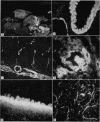Abstract
The immunogenicity of smooth muscle actin is increased by ageing at 4 degrees for at least a week. Rabbits lacking natural smooth muscle antibodies were injected with 1 mg of aged purified actin in adjuvant. Fourteen out of thirty-six rabbits produced serum antibodies which precipitated with actin solution, but not with smooth muscle tropomyosin, myosin, light or heavy meromyosin or with other unidentified non-actin proteins in crude extracts. Analysis of crude actin extract before and after precipitation by antiserum (i) by Sephadex G-200 chromatography and (ii) for its stimulating effect on myosin ATPase activity showed that actin was selectively removed. The precipitate itself, analysed on SDS-polyacrylamide gel, showed one band in the actin position, and otherwise only bands representing immunoglobulins. The antiserum also inhibited the ability of actin to stimulate myosin ATPase activity, and prevented polymerization of G-actin to F-actin, as shown by viscosity and EM studies. On immunoflouresence with cryostat tissue sections or cell cultures, anti-actin serum stained smooth muscle fibres and many non-muscle cells, in the latter staining the microfilaments. The staining was prevented by absorbing the antiserum with actin (16 mug per 5 mul serum), and was abolished by pretreatment of the cells with cytochalasin B. No species specificity was demonstrated for these anti-actin antibodies.
Full text
PDF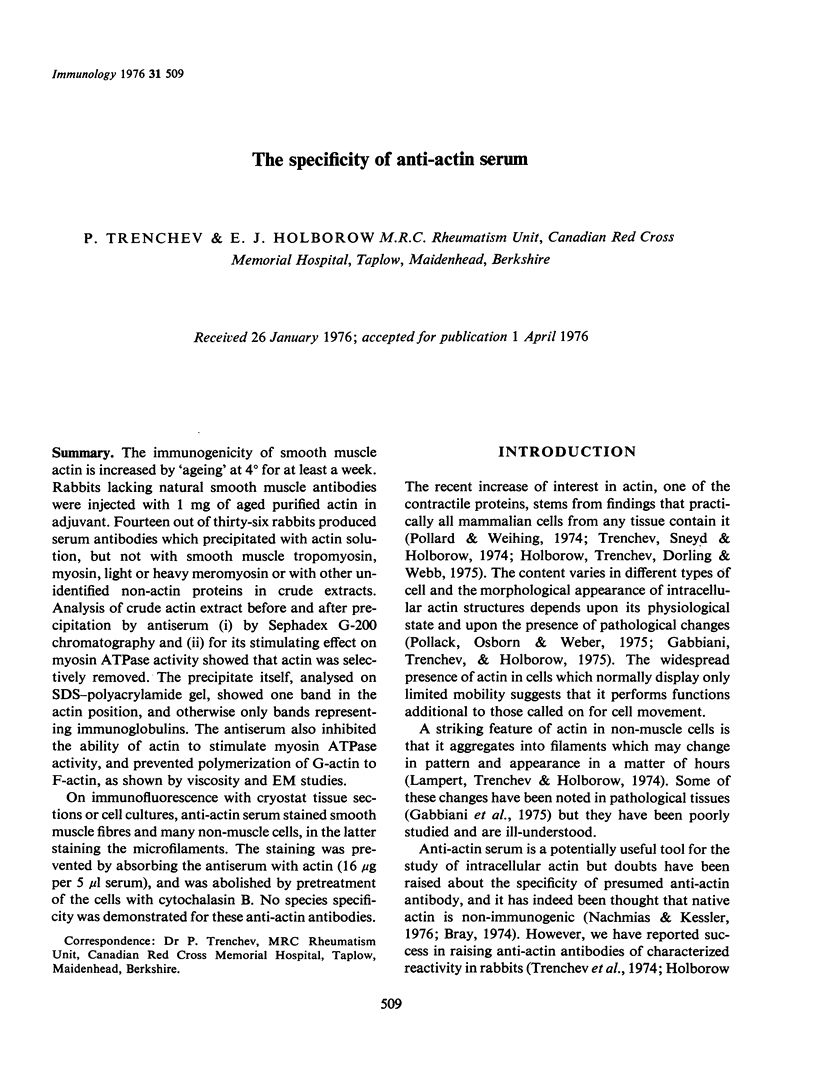
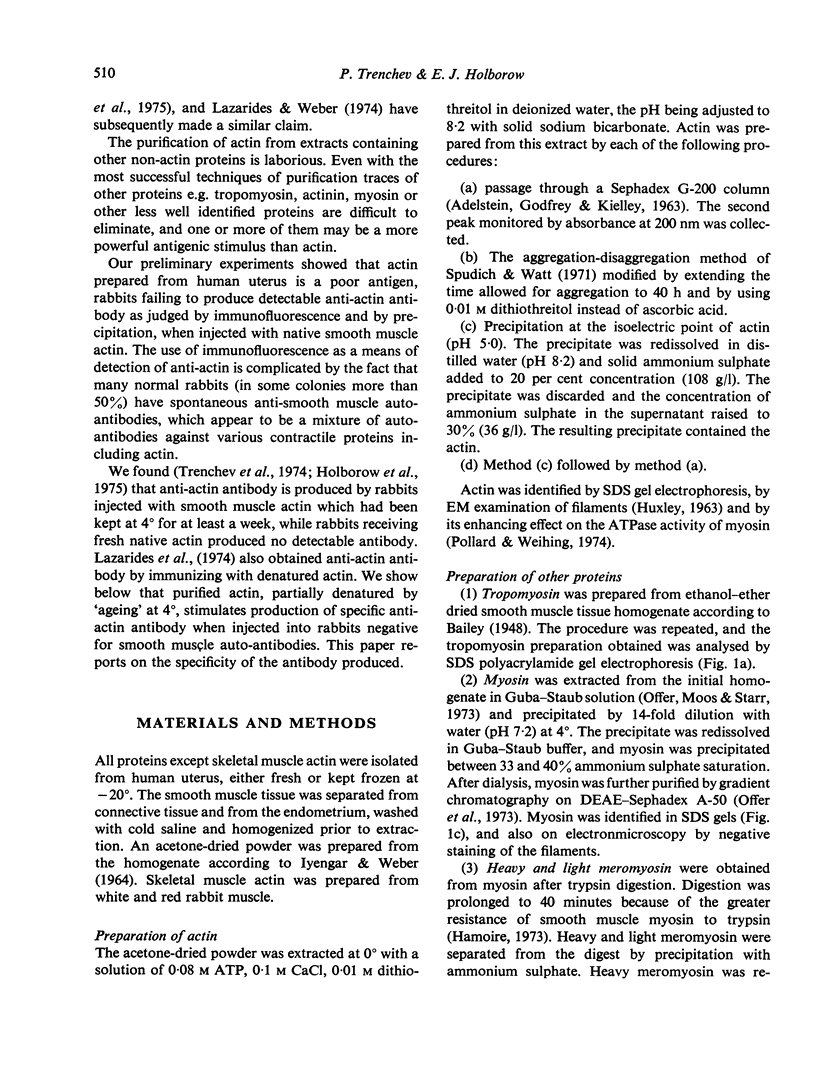
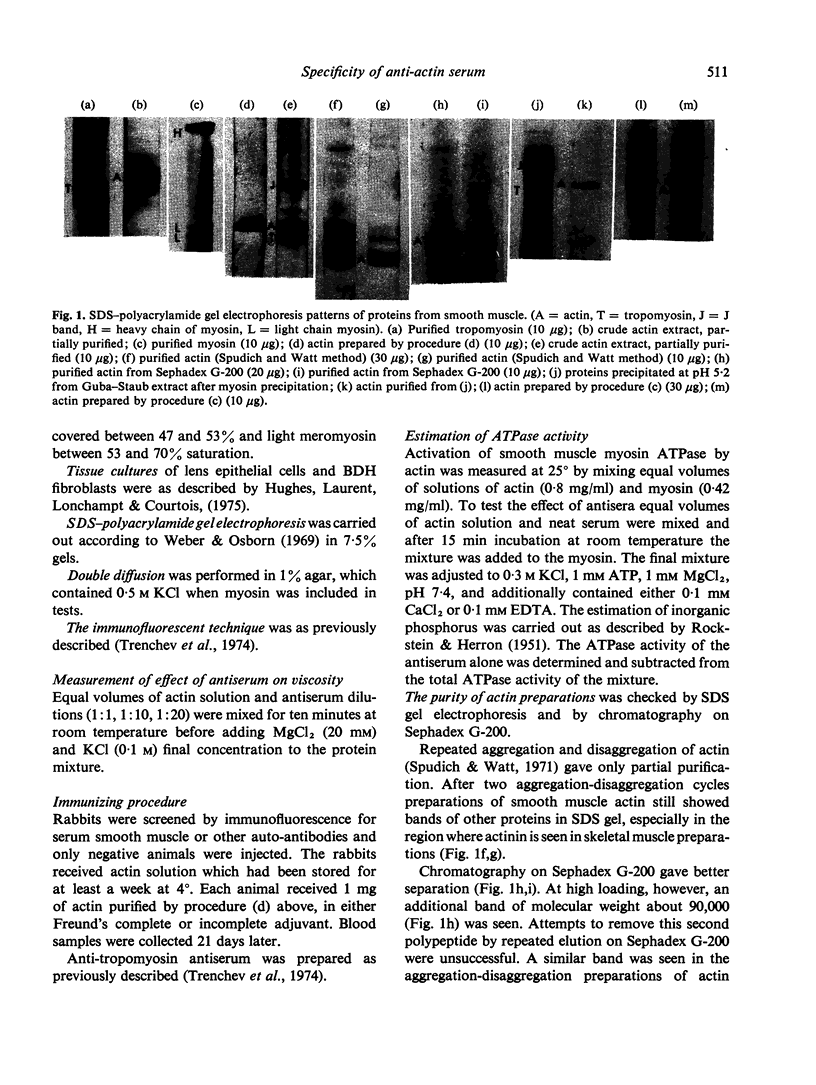
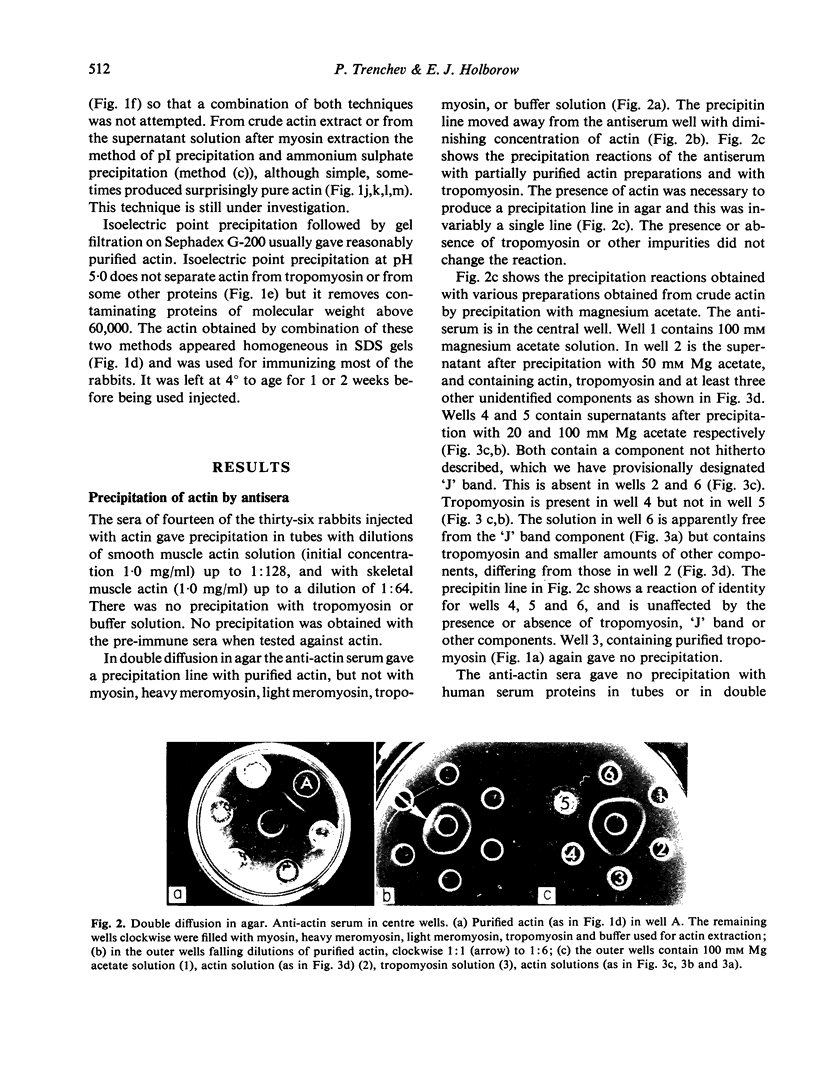
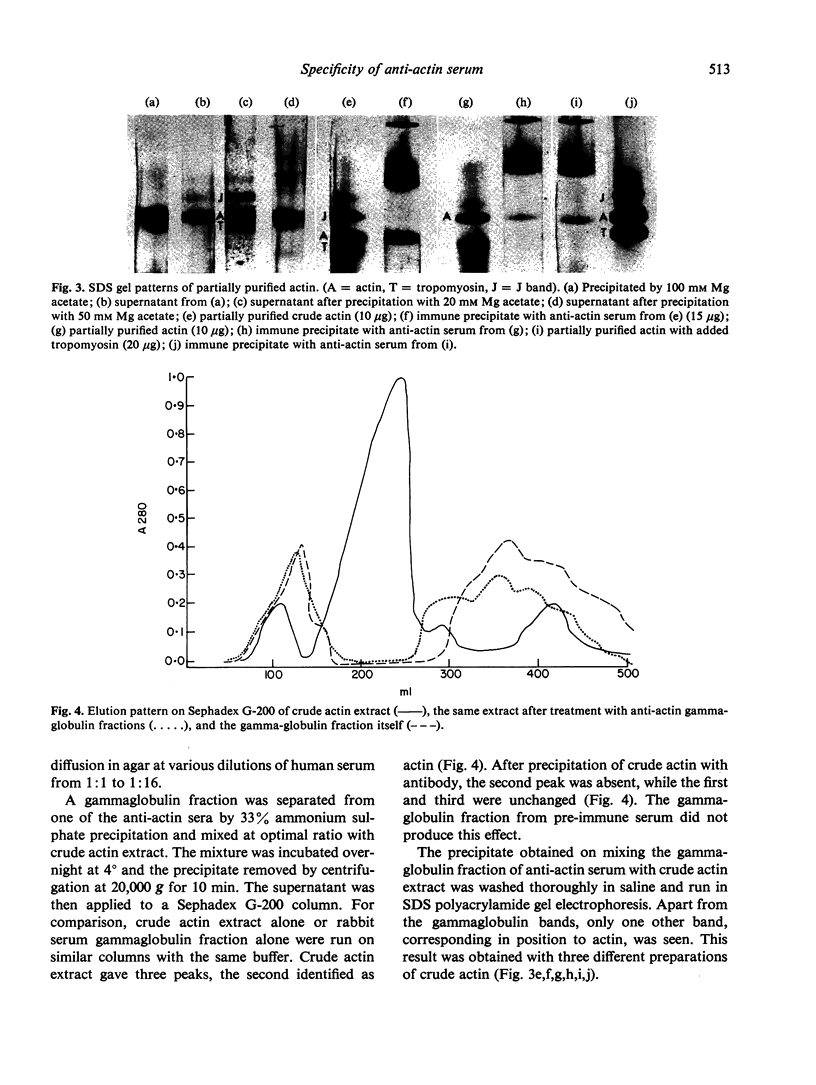
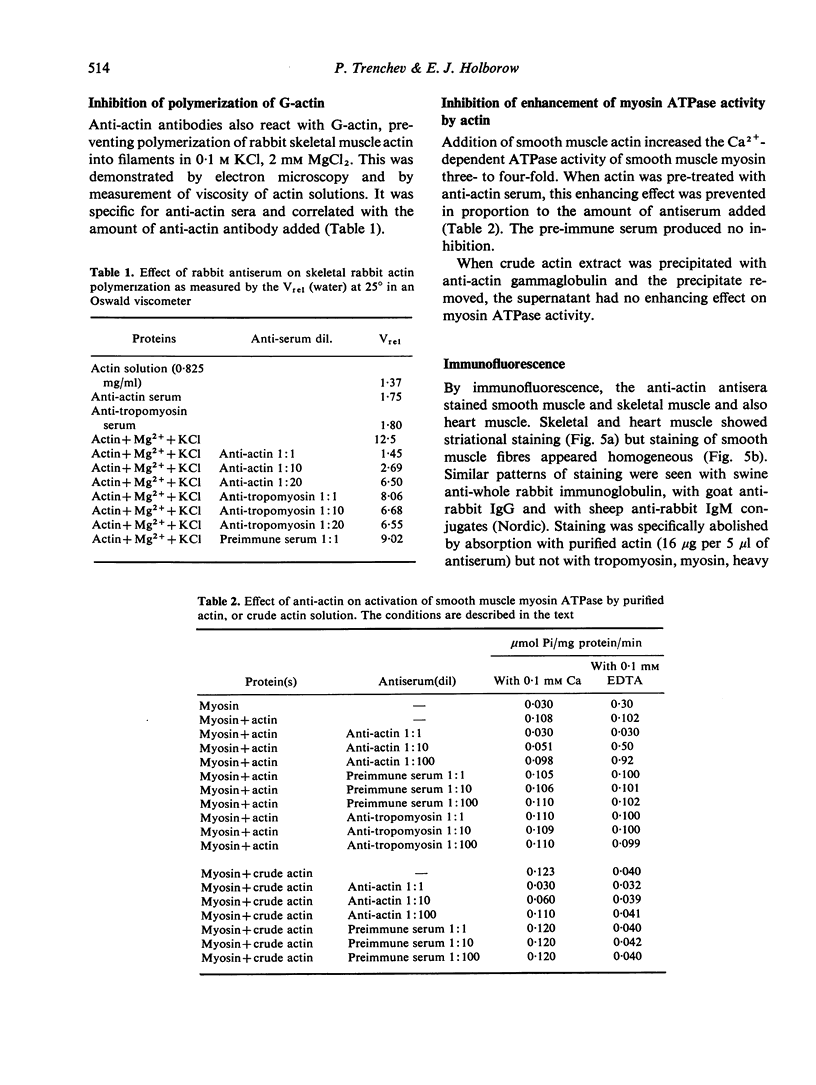
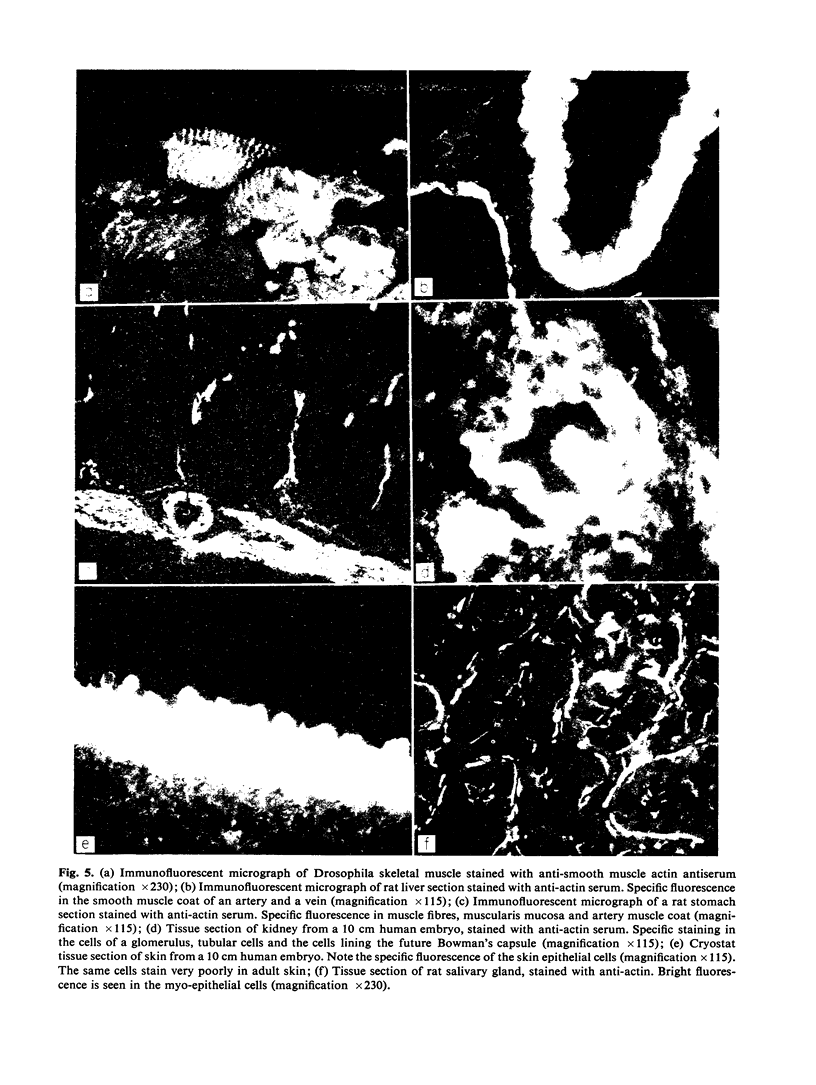
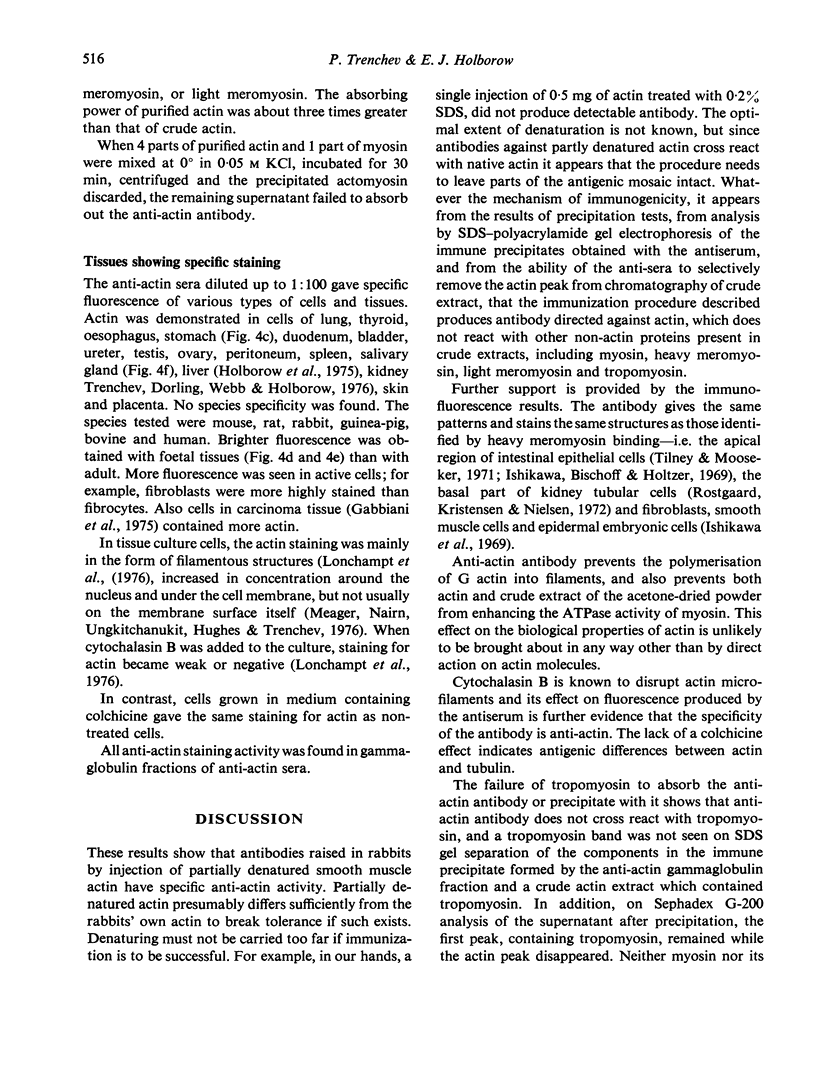
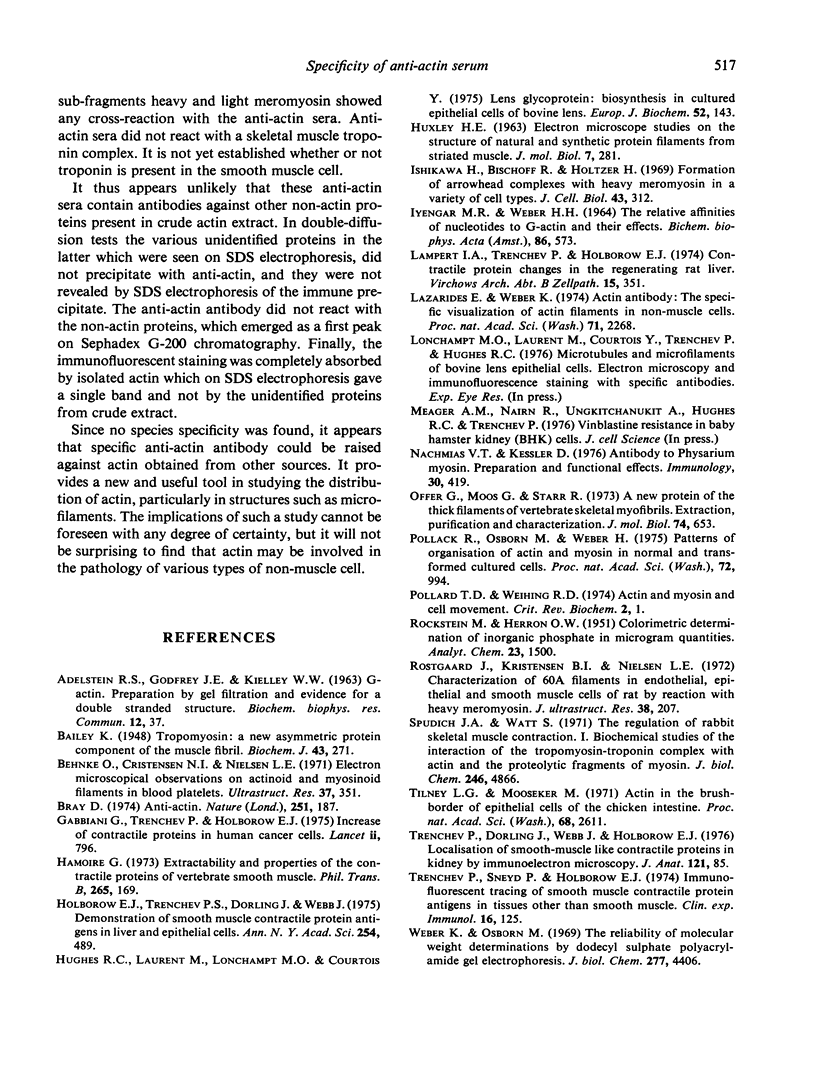
Images in this article
Selected References
These references are in PubMed. This may not be the complete list of references from this article.
- Bailey K. Tropomyosin: a new asymmetric protein component of the muscle fibril. Biochem J. 1948;43(2):271–279. doi: 10.1042/bj0430271. [DOI] [PMC free article] [PubMed] [Google Scholar]
- Behnke O., Kristensen B. I., Nielsen L. E. Electron microscopical observations on actinoid and myosinoid filaments in blood platelets. J Ultrastruct Res. 1971 Nov;37(3):351–369. doi: 10.1016/s0022-5320(71)80129-6. [DOI] [PubMed] [Google Scholar]
- Gabbiani G., Trenchev P., Holborow E. J. Increase of contractile proteins in human cancer cells. Lancet. 1975 Oct 25;2(7939):796–797. doi: 10.1016/s0140-6736(75)80008-0. [DOI] [PubMed] [Google Scholar]
- Hughes R. C., Laurent M., Lonchampt M. O., Courtois Y. Lens glycoproteins: biosynthesis in cultured epithelial cells of bovine lens. Eur J Biochem. 1975 Mar 3;52(1):143–155. doi: 10.1111/j.1432-1033.1975.tb03982.x. [DOI] [PubMed] [Google Scholar]
- Ishikawa H., Bischoff R., Holtzer H. Formation of arrowhead complexes with heavy meromyosin in a variety of cell types. J Cell Biol. 1969 Nov;43(2):312–328. [PMC free article] [PubMed] [Google Scholar]
- Lampert I. A., Trenchev P., Holborow E. J. Contractile protein changes in the regenerating rat liver. Virchows Arch B Cell Pathol. 1974;15(4):351–355. doi: 10.1007/BF02889350. [DOI] [PubMed] [Google Scholar]
- Lazarides E., Weber K. Actin antibody: the specific visualization of actin filaments in non-muscle cells. Proc Natl Acad Sci U S A. 1974 Jun;71(6):2268–2272. doi: 10.1073/pnas.71.6.2268. [DOI] [PMC free article] [PubMed] [Google Scholar]
- Nachmias V. T., Kessler D. Antibody to Physarum myosin. I. Preparation and functional effects. Immunology. 1976 Mar;30(3):419–424. [PMC free article] [PubMed] [Google Scholar]
- Offer G., Moos C., Starr R. A new protein of the thick filaments of vertebrate skeletal myofibrils. Extractions, purification and characterization. J Mol Biol. 1973 Mar 15;74(4):653–676. doi: 10.1016/0022-2836(73)90055-7. [DOI] [PubMed] [Google Scholar]
- Pollack R., Osborn M., Weber K. Patterns of organization of actin and myosin in normal and transformed cultured cells. Proc Natl Acad Sci U S A. 1975 Mar;72(3):994–998. doi: 10.1073/pnas.72.3.994. [DOI] [PMC free article] [PubMed] [Google Scholar]
- Pollard T. D., Weihing R. R. Actin and myosin and cell movement. CRC Crit Rev Biochem. 1974 Jan;2(1):1–65. doi: 10.3109/10409237409105443. [DOI] [PubMed] [Google Scholar]
- Spudich J. A., Watt S. The regulation of rabbit skeletal muscle contraction. I. Biochemical studies of the interaction of the tropomyosin-troponin complex with actin and the proteolytic fragments of myosin. J Biol Chem. 1971 Aug 10;246(15):4866–4871. [PubMed] [Google Scholar]
- Tilney L. G., Mooseker M. Actin in the brush-border of epithelial cells of the chicken intestine. Proc Natl Acad Sci U S A. 1971 Oct;68(10):2611–2615. doi: 10.1073/pnas.68.10.2611. [DOI] [PMC free article] [PubMed] [Google Scholar]
- Trenchev P., Dorling J., Webb J., Holborow E. J. Localization of smooth muscle-like contractile proteins in kidney by immunoelectron microscopy. J Anat. 1976 Feb;121(Pt 1):85–95. [PMC free article] [PubMed] [Google Scholar]
- Trenchev P., Sneyd P., Holborow E. J. Immunofluorescent tracing of smooth muscle contractile protein antigens in tissues other than smooth muscle. Clin Exp Immunol. 1974 Jan;16(1):125–135. [PMC free article] [PubMed] [Google Scholar]
- Weber K., Osborn M. The reliability of molecular weight determinations by dodecyl sulfate-polyacrylamide gel electrophoresis. J Biol Chem. 1969 Aug 25;244(16):4406–4412. [PubMed] [Google Scholar]



